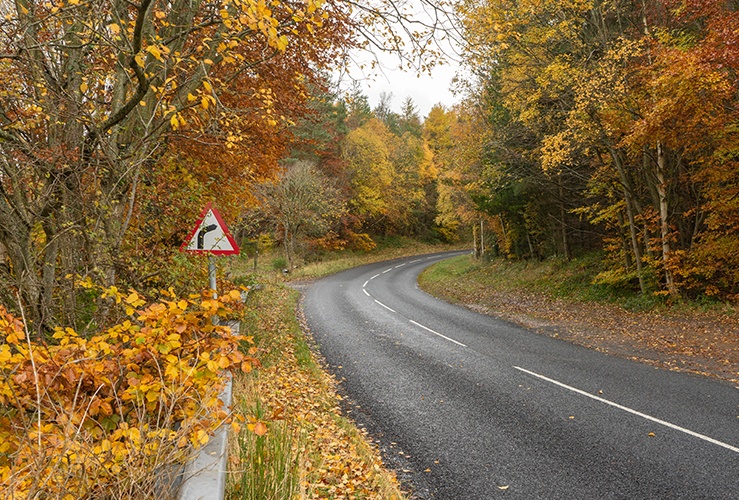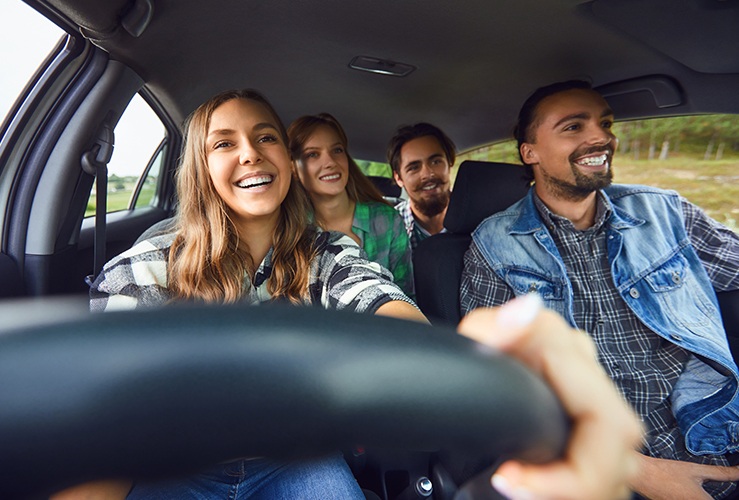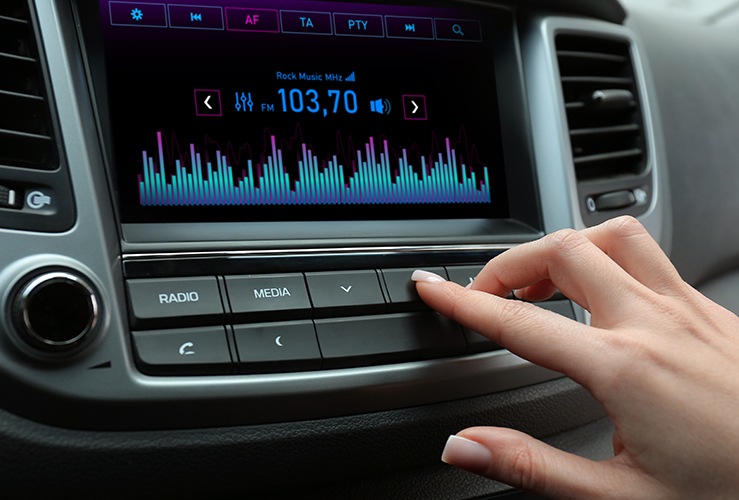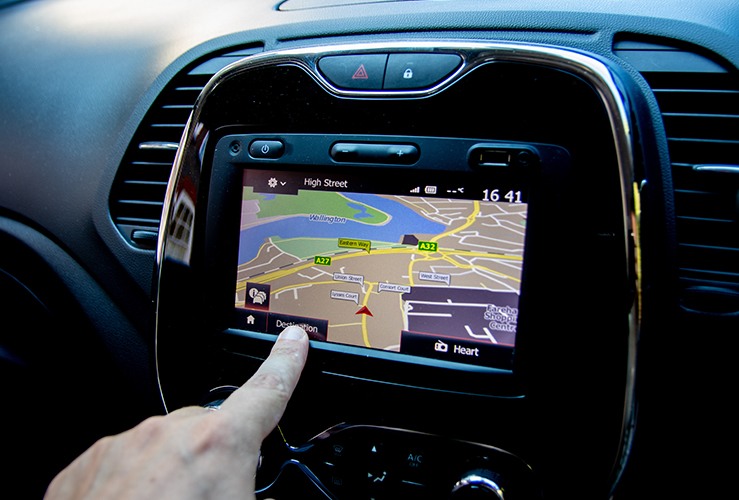Learning to drive safely doesn't stop once you pass your test. There are many on-the-road scenarios yet to be mastered…
So, you've passed your test, you have a vehicle, and it's insured, fuelled-up, and ready to go. Now what? The prospect of being allowed out on public roads is thrilling and daunting in equal measure. You're now permitted to drive alone, with no instructor or parent overseeing every gear change and mirror-check.
But "with great power comes great responsibility" as Voltaire (and later Spider-Man) noted. Because learning to drive doesn't stop once you pass your test, there are many on-the-road scenarios that require mastering.
Sadly, if you're young and male, you have a higher chance of being hurt in a collision. As gov.uk states, "Young male car drivers aged 17 to 24 are 4 times as likely to be killed or seriously injured compared with all car drivers aged 25 or over." With this in mind, it's critical to learn how to drive safely, to avoid risking your own life, and those of your passengers and other road users.
Safe, cautious driving will help ensure you avoid collisions, keep your licence, and, over time, reduce your insurance costs. Driving carefully from the outset could help you avoid a lot of pain, stress, and cost later on.
Here are 10 essential tips for the next chapter of your life as a young driver.
Beware of peer pressure
According to a study by the University of Dallas, peer pressure lasts into early adulthood. As we age, we gain more control of our desires. But as a young driver, it's important to be aware of how peer pressure can affect you - because it can lead to you taking unnecessary risks on the road.
Young male drivers, in particular, can be keen to 'show off' to their passengers - especially if those passengers are in their age group. Sharp acceleration, driving faster than necessary, and even driving while under the influence of drink and/or drugs all increase the chances of a collision, and therefore injury or death.
Behaviours you might feel pressured into:
- Driving while tired
- Driving faster than necessary
- Driving while under the influence of drink or drugs
- Driving without a seatbelt (or permitting passengers to do the same)
- Not waiting for a sufficient gap when pulling out
- Not leaving enough space between you and the vehicle ahead (i.e not observing the 2-second rule)
- Driving with rowdy/drunk passengers
Don't be pressured into driving your friends around until you feel ready, and be sure to tell them to keep the noise down/behave if you need to.
You may also feel pressured by other motorists - for example by travelling faster than you feel comfortable with (and being tailgated as a result), or joining roads with a shorter gap in traffic than you feel is safe (again, with vehicles waiting behind you). Always drive with safety in mind, while doing your bit to keep traffic moving.
Turn off the radio/playlist
Driving with your favourite music on is one of the great pleasures of motoring. However, it may well make it harder to concentrate on the road ahead and possible hazards. According to a study by Ben-Gurion University of the Negev, "Teens listening to their preferred music while driving commit a greater number of errors and miscalculations".
The study also found that young drivers tend to listen to loud, fast-paced music, which can negatively impact how they drive (i.e they drive faster and make manoeuvres quicker). Conversely, the report found that listening to more relaxed background music decreased "deficient driving behaviours" by 20 percent.
Get lots of practice
Just as with anything in life, you won't see your skills improve unless you practise them. Get out on the road frequently and in different driving conditions - for example, during busier times, on the motorway, or driving on country roads. You might ask an experienced (and patient) driver to accompany you on some trips while undertaking other journeys by yourself. It's important to build up confidence both on your own and while carrying passengers.
Understand how your car works
Whether you're driving your own car or borrowing your parents' vehicle, it's important to understand the basics of how the car works. In particular, know how to operate the headlights (dipped and full beam), the wipers, and the hazard lights. Keep the manual in the glove box for reference. A little preparation can save a lot of stress later on - and help keep you and any passengers safe.
If you're embarking on a longer trip, be sure to check your tyre pressure and tread depth; windshield wipers and screenwash; air conditioning, oil level; engine coolant; and brake fluid. These should be checked periodically even if you only undertake shorter journeys.
Use P plates
They may cramp your style, but P plates let other road users know you have less experience, and should therefore buy you some extra time and space on the road.

Get out on the motorway sooner rather than later
Driving on the motorway can be a daunting experience for a new driver. It's best to get out onto a motorway soon after passing your test, so you can overcome any anxiety as soon as possible. Motorway driving is in fact very safe (accounting for 6 percent of fatalities while making up 20 percent of road traffic) - but can induce anxiety due to the speeds involved, and the fear of missing turn offs. Again, take an experienced driver with you for extra support and advice.
You’ll be staying in the left lane most of the time, unless overtaking, or making space for other cars to join the motorway.
Practice in bad weather
While this may sound counterintuitive, it's important you get used to driving in snow, ice, rain, wind, and fog. At some point, you will need to drive in such conditions, so it's important to get sufficient practice. Stay calm, take your time, and begin with shorter trips. Again, take an experienced driver with you if it helps; they will be able to provide those little tips for anticipating possible hazards ahead - tips that the standard series of driving lessons is not likely to encompass.
Plan your routes carefully
While Shakespeare was born several hundred years before the motor car appeared, his words "readiness is all", spoken by Hamlet, can be applied to sensible modern driving. Plan your route carefully, noting junction locations and landmarks that can help you orientate yourself as you travel.
If the satnav or Google Maps suggests it will take 30 minutes to reach your destination, give yourself an extra 10-15 minutes so you don't rush, and can get back on track if you make a wrong turn. If you're heading to an important appointment, leave even more time to find the address and suitable parking.

Take extra care on country roads
According to UK government statistics, "Rural roads carry 40% of road traffic, but account for 62% of road fatalities." This is because vehicles travel much faster on rural roads compared to urban ones. Country roads are also narrower, with "blind bends, dips and other distractions," according to a 2013 government report.
Tips for safer rural driving:
- Be ready to slow down and stop and allow bigger vehicles to pass safely - particularly important on narrow stretches
- Avoid overtaking unless it is necessary
- Avoid overtaking on hills - as it takes longer to pass going uphill
- Beware potholes and bumps - country roads are less well maintained than urban ones
- Never overtake on a bend, when you cannot see the road ahead, or when other road users are about to join the road
- When approaching blind bends use your horn to tell other road users you are there
- Note any road warning signs
- Be ready for unexpected hazards such as horse riders, cattle, or deer
- Know that hedges and trees can obscure your line of sight, so drive more defensively (anticipating possible hazards).
Work to keep your MPG (and costs) down
Driving is an expensive affair, but you can reduce your outgoings by keeping your revs down, and avoiding sharp acceleration and braking. As well as lowering your fuel consumption, this kind of cautious driving will lower your chances of an accident, and reduce wear and tear on your vehicle - thereby cutting repair costs. It will also help you maintain your no claims bonus, and in time, reduce your insurance costs.







